A deserted road in Samburu
A deserted road in Samburu National Park with mountains and bush land in the far distance.

A deserted road in Samburu National Park with mountains and bush land in the far distance.
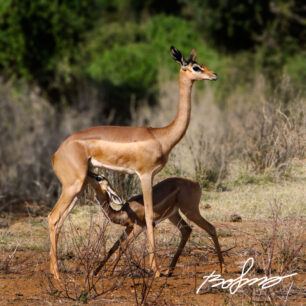
Gerenuk with a small calf breastfeeding. This elegant and beautiful gazelle is found in dry and thorny bush and semi desert. Gerenuks are slender with relatively small head for their body size. Their eyes and ears makes them looks like they are proportionally too large. When standing erect on their rear legs and stretching their elongated necks they can reach higher branches and twigs than other gazelles.
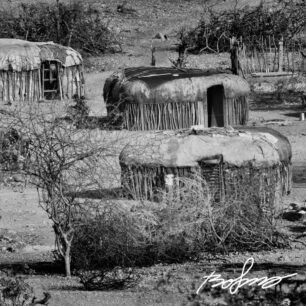
Traditional Samburu housing. Branches for the walls and mud sculpted roof with thick thorn bushes around for protection against wild animals.
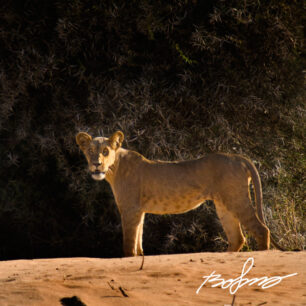
Lion standing in front of a thorn bush with beautiful light. After inspecting the picture it appeared the lion had a strange pattern on the fur a bit like a leopard.
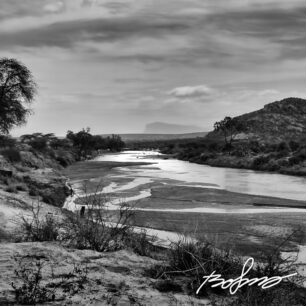
Beautiful view of the Ewaso Ng’iro river in Samburu. The sun just kissing the surface of the water on a quiet afternoon.
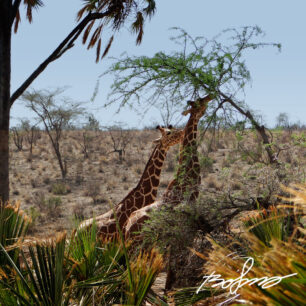
Two giraffes nipping away on a tree with plenty of fresh sprouts. Near the Ewaso Ng’iro river in north Kenya.
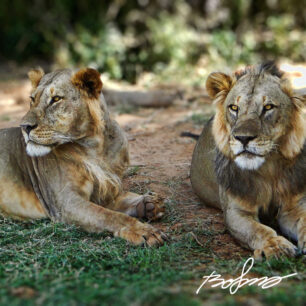
Two battle hardened lions in Samburu. These two lions looks like sailors from past days with plenty of scars from fights.
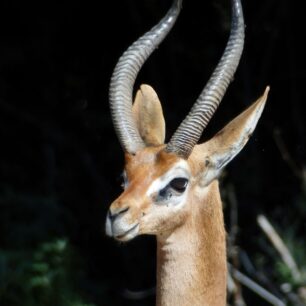
The gerenuk is an elegant and beautiful gazelle found in the dry, thorny bush and semi-desert scrublands of East Africa. Its small head, long neck, and large eyes and ears give it a distinctive appearance. To reach higher branches and twigs than other gazelles and antelopes, the gerenuk stands erect on its hind legs, further extending its impressive reach. This unique feeding strategy gives it access to a food source that few other animals can utilize.
Unfortunately, this graceful creature is prey for a variety of predators, including lions, cheetahs, jackals, and leopards.
The images you see here were taken in Samburu National Reserve, located on the banks of the Ewaso Ng’iro river in Kenya. This reserve is famous for its diverse wildlife and stunning landscapes. It also holds a special place in conservation history, as it was one of the areas where George and Joy Adamson raised Elsa the Lioness, made famous in the book and film “Born Free.”
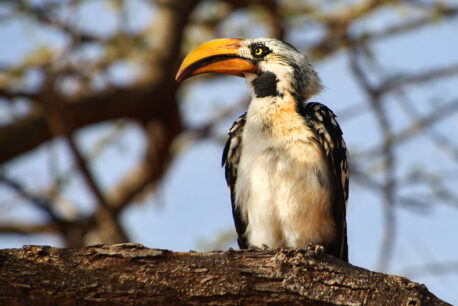
The Samburu region of Kenya, a land of stark beauty, is intrinsically linked to the Ewaso Ng’iro River. This vital waterway, a source of life for the region’s people and wildlife, can transform from a gentle stream into a raging torrent during the rainy season, showcasing nature’s power in this semi-arid landscape.
One of the remarkable inhabitants of this environment is the Eastern Yellow-billed Hornbill, a striking bird easily recognized by its distinctive black eye-rings. These hornbills are a common sight in the dry thornveld and broadleaf woodlands, often seen foraging for insects along dusty roadsides.
During the breeding season, the female typically lays three to four white eggs within a tree cavity. She diligently incubates these eggs for about 25 days, after which the chicks hatch and remain in the nest for approximately 45 days until they fledge. The Eastern Yellow-billed Hornbill, a member of the Bucerotidae family, plays a vital role in this ecosystem, contributing to its biodiversity and unique character.